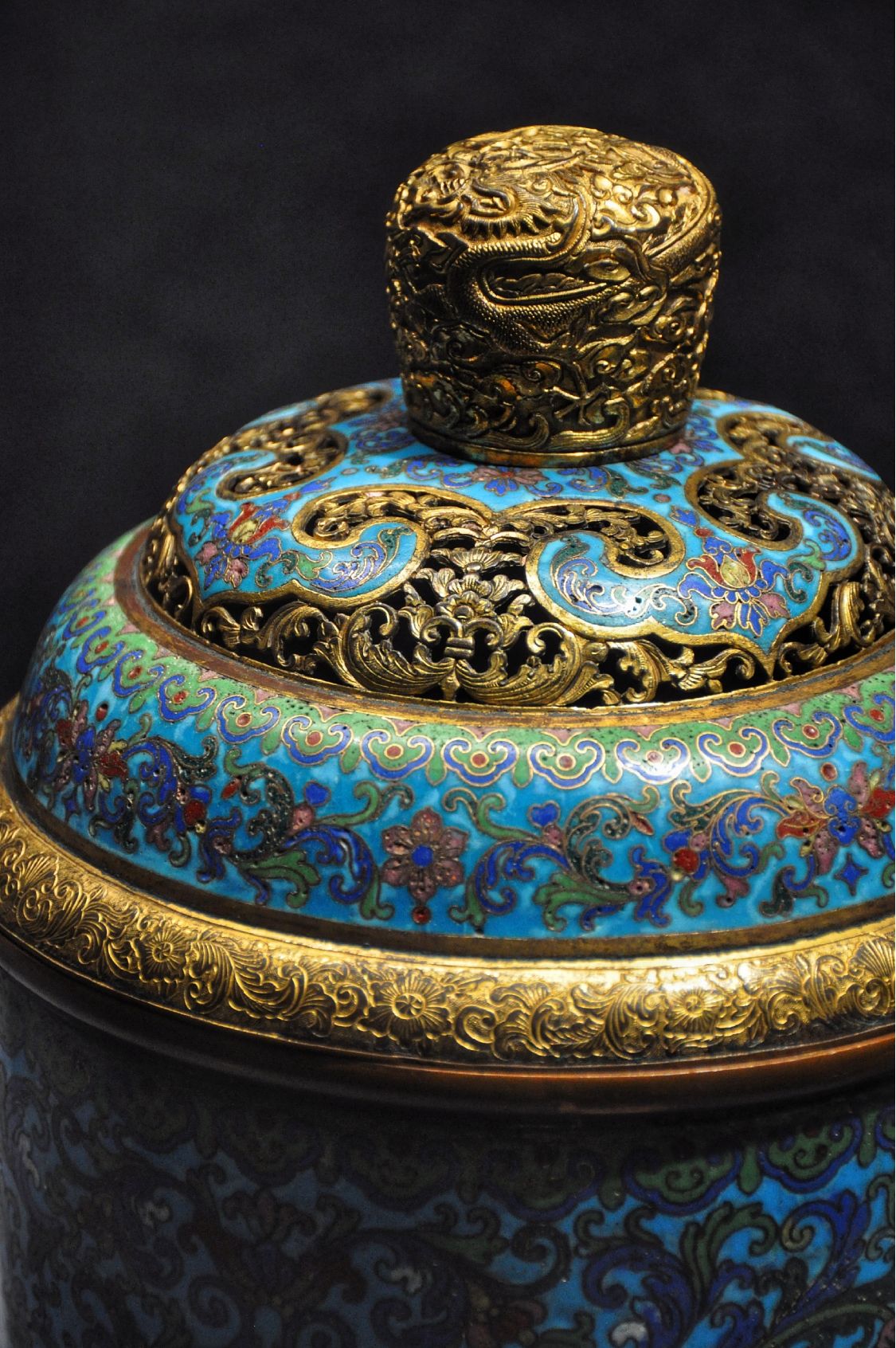
Jingtailan, a Treasure Beloved by Collectors
The Durant Guild
2023-07-04
To many collectors, Jingtailan, or Chinese cloisonné enamelware, holds immense value for collectors. It is not only a sought-after investment piece but also one of China’s precious cultural treasures thanks to its use of expensive materials, exquisite craftsmanship, and rarity.
A Chinese Cultural Treasure
The famous Chinese collector Ma Weidu once said in a TV program that Jingtailan is extremely rare and has mostly been stored at the Palace Museum, ensuring that its rarely seen by the general public. Some examples of this phenomenon include a cloisonné wine cup made during the regime of Emperor Qianlong of the Qing Dynasty, a cloisonné cup plate made during the regime of Emperor Xuande of the Ming Dynasty, among others.
As a representative of palace art, Jingtailan has been reserved for the imperial family throughout its history. It is considered the vessel of choice for royal recognition.
Jingtailan is a distinctive Chinese art form that emerged during the Jingtai period of the Ming Dynasty. It is also known as “copper-based cloisonné.” Today, “Jingtai” no longer simply refers to a reign title but carries a beautiful and auspicious meaning.
For this reason, Jingtailan has frequently been presented as a national gift on diplomatic occasions in recent years. During the 2014 APEC Summit in Beijing, for example, a Jingtailan vase named Sihaishengping, or Global Peace, was given to the attending state leaders.
Unrivaled Craftsmanship, Exquisite Techniques
According to historical records, Jingtailan first appeared during the Yuan Dynasty. In the late Qing Dynasty, poets praised its unrivaled craftsmanship, stating, “It surpasses all other cloisonné worldwide.”
Jingtailan features costly materials, mostly copper-based, though sometimes even gold- or silver-based, with enamel typically made of minerals and/or precious stones. Moreover, the amount of gold consumed for gilding is considerable. As a result, Jingtailan’s production costs far exceed those of porcelain pieces of similar size.
Moreover, its manufacturing process is renowned for its complexity. For centuries, Jingtailan has been meticulously handcrafted since machine production is not possible. To create a Jingtailan piece typically requires a variety of processes such as designing, base making, wire weaving, wire bonding, enamel application, firing, polishing, and gilding. Furthermore, a kiln can only take one unit at a time, resulting in very limited production.
Therefore, every Jingtailan piece represents the dedication and craftsmanship of artisans, truly deserving its title as a cultural treasure of China.
Record-Breaking Auction Prices
Due to its unique artistic value and scarcity, Jingtailan has fetched astonishingly high prices at auctions in recent years.
According to data from Christie's Hong Kong, in 2002, a cloisonné box made during the Xuande period of the Ming Dynasty sold for HKD 10.57 million. In 2005, a cloisonné brush container from the Kangxi period of the Qing Dynasty achieved a price of HKD 11.40 million.
The most remarkable event was during Christie's Hong Kong autumn auction in 2010. A pair of cloisonné incense burners made for Emperor Yongzheng of the Qing Dynasty sold for a staggering HKD 129.5 million, setting a new world record for cloisonné auctions.
The highest price for a single piece was commanded by a cubic cloisonné container made for Qing Dynastyh Emperor Qianlong when it went for CNY 550,000 during the SUNGARI autumn auction season of 2002. It was later resold for CNY 1.90 million, or 3.5 times the previous price, three years later. These astronomical numbers further illustrate the market value of Jingtailan and how obsessed collectors around the world are with it.
Nonetheless, despite Jingtailan's immense popularity among collectors, it is ultimately also an important cultural treasure of China.